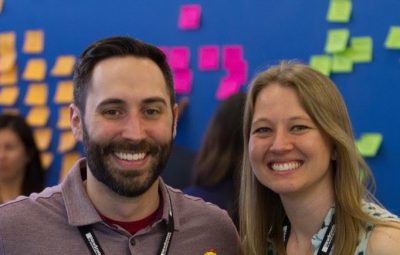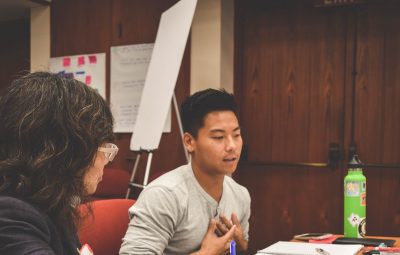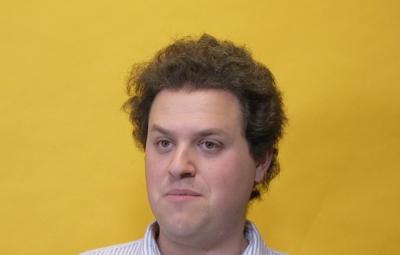The Design Lab is launching the Global Scholars program this spring quarter, an exciting new initiative for graduate-student learning.
Known for creating human-centered design solutions that focus heavily on users’ needs and behaviors, the Design Lab, located within the Qualcomm Institute at UC San Diego, is home to an impressive team of interdisciplinary designers, engineers, technologists, scientists and business leaders who work on large-scale complex socio-technical challenges regionally and beyond.

Atkinson Hall on UC San Diego campus, home of the Design Lab
The UCSD Design Lab has a strong reputation for its foundation in cognitive science,” said Nanna Inie, an industrial postdoctoral scholar at IT University of Copenhagen who approached the Design lab in 2019 about the possibility of working with them as a visiting scholar while she was completing her Ph.D.
“When I browsed their website, I must admit I was a little impressed about the number of academic stars – or at least people of whom I knew the names – so it was an obvious choice for me to go and learn from the best.”
Like many European graduate students, Inie was required to go abroad as part of her Ph.D. requirements. Her six months of working with Design Lab experts was considered a beta test of the Global Scholars program, and her feedback on her experience was instrumental in shaping some of the rudimentary elements of the program before its official launch.
[The Design Lab faculty, students, and staff] were so incredibly open to input, and we had some great dialogues about what one needs as a visiting scholar,” said Inie.

Nanna Inie, Industrial Postdoctoral Scholar at IT University of Copenhagen
With the lessons learned from Inie’s experience, the Global Scholars initiative now hopes to attract more international graduate students to UC San Diego by creating a program that is mutually beneficial to both students and the campus. Working with campus entities such as the Office of International Affairs and Qualcomm Institute, the Design Lab will conduct another test run of the program in the Spring quarter 2020. If successful, the program will expand to accommodate four or five students per session. Visiting scholars work with the Design Lab prior to arrival to identify their objectives and scope of work while in residence at UC San Diego. For example, they can bring a project with them and work on it with Design Lab experts and/or the Design Lab can connect them with existing projects on campus. Currently, the visiting scholar’s home institution covers the student’s expenses and often a stipend for the student’s time at UC San Diego.
As a growing entity on campus, we need talented people, and the students get access to a network of esteemed researchers at UCSD and a chance to fulfill their Ph.D. requirements in a completely new context,” said Michèle Morris, Associate Director of the Design Lab.
“It’s a win-win situation for everyone involved.”
According to Morris, San Diego is an alluring and productive environment for international students interested in everything from civic design to artificial intelligence, data visualization to healthcare and more because of its unique location, world-renowned expertise, diverse population, proximity to the border, and connection to the military and technology hubs – all of which provide unique design challenges and opportunities to work with large, complex, socio-economic systems. For the Design Lab, international students will bring new perspectives that can aid in generating creative solutions to problems and build the strong global ties needed for large-scale results.
More ideas and diversity of thoughts and experience breed a wealth of opportunity and impact,” said Morris.

Graduate Students presenting in the Design Lab
The Design Lab is in the process of building this global pipeline of students with two institutions: The Danish government and TU Delft. Students interested in the program should be prepared to work hard and be active contributors to their projects. For Inie, the biggest benefit from her time with the Design Lab came from being pushed to reach beyond her initial expectations.
The Design Lab, and especially the students, raised the bar for what constitutes hard, academic work,” said Inie.
“It made me aim higher, and now I trust that my research is worthy of top-tier venues.”






